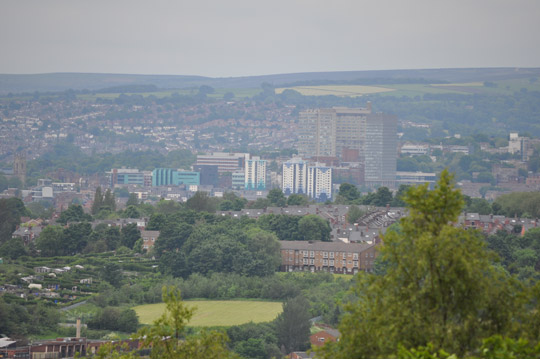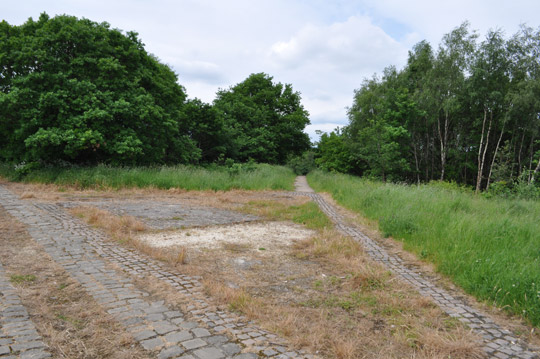Sheffield’s greatest prehistoric monument?
Over the bank holiday weekend I took the opportunity to explore what is described as probably Sheffield’s greatest prehistoric monument by University of Sheffield archaologists.
Wincobank hill is on the north east of the city. It’s the big one behind Meadowhall. The hill is surrounded by ancient woodland and its summit was once home to an Iron age fort. The shape of the fort’s ramparts are visible on this photo on the Friends of Wincobank Fort website.
It is a relatively easy walk up there. The route we followed was from the Walking South Yorkshire book by Rob Haslam. It starts at Firth park car park on Hucklow Road although I think you can probably park closer if you want.
Your ascent takes you through the park, meadows and woodland before you reach the top of the hill. The remains of the fort aren’t that obvious once you are up there but the views are superb.
On one side you look towards Keppel’s column and Rotherham. Walking along the ridge you can then look out across the lower Don valley:
(Lower Don valley from Wincobank hill – large size)
Keep going and eventually you can see a spectacular view towards the city centre and north west Sheffield.
(City centre and north west Sheffield from Wincobank hill – large size)
According to Wikipedia, the fort wasn’t Roman, but instead was constructed by the Celtic Brigantes tribe.
At the top of the hill you’ll also find the location of a gun turret from world war two.
If you’re interested to find out more about Wincobank hill and how you can support it then try the Friends of Wincobank Hill website.







junkmogul
/ 13 January, 2015“Many of these tiny [Tardenosian] flints were found at Wincobank Hill in south Yorkshire, which Mr. Armstrong thinks has been continuously occupied since about 10,000 B.C. (14) ..[p6]
…we should not forget that Wincobank Hill (now Sheffield) and London are probably among the oldest continually inhabited sites anywhere in the world, so far as at present can be ascertained.” [p39]
–INSOLE, Alan V.: ‘Immortal Britain’ (1952), citing ARMITAGE, Harold: ‘Early Man in Hallamshire’ (1939).